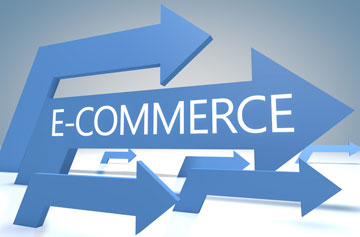 E-commerce stores are more popular now, with a large section of consumers preferring to purchase things online. With more shoppers spending their money online, e-commerce businesses now utilize outsourced solutions to provide a consistent quality of services, improve customer satisfaction and maximize sales. Earlier, many industries made fragmented investment in technologies as their first step towards going digital but it led to limited success. Today, with the help of business process outsourcing services, industries can digitally transform and automate their systems efficiently. Digitally transformed industries are distinguished by features such as an advanced technology platform, a staff of experienced digital merchandise and marketing experts, and highly sophisticated analytics that continue to perform systematically. Revenue growth, cost savings and customer satisfaction are also likely to be higher compared to their competitors.
E-commerce stores are more popular now, with a large section of consumers preferring to purchase things online. With more shoppers spending their money online, e-commerce businesses now utilize outsourced solutions to provide a consistent quality of services, improve customer satisfaction and maximize sales. Earlier, many industries made fragmented investment in technologies as their first step towards going digital but it led to limited success. Today, with the help of business process outsourcing services, industries can digitally transform and automate their systems efficiently. Digitally transformed industries are distinguished by features such as an advanced technology platform, a staff of experienced digital merchandise and marketing experts, and highly sophisticated analytics that continue to perform systematically. Revenue growth, cost savings and customer satisfaction are also likely to be higher compared to their competitors.
It is estimated that global e-commerce sales will cross USD 2 trillion by 2017. To enjoy the benefits of this growth, online businesses need to ensure that they meet the changing requirements of their customers across markets. What are the expectations customers have today? They want products relevant to them, suitable discounts, and a flawless experience during checkout. Optimal experience on mobile devices, better decision tools, option to check stock, customized service, and value-added services such as same-day delivery are some other things that online shoppers are looking for.
In short, they expect better service and support from e-businesses.
A company venturing into e-Commerce may have many uncertainties such as whether the customers will order online, which product will sell, channel conflict, how to integrate ecommerce system with back office system and so on. However, their primary objective is to increase the conversion rate and acquire new customers. To increase e-Commerce store profitability, the best way is to focus on increasing the AOV (Average Order Value). AOV signifies the amount a customer is spending on average whey they checkout on an e-commerce store, and the higher this amount, the better it is for the store. High AOV plays a major role in determining the business’s ability to market their products/services effectively and continue growing their customer base in the process. Focusing on AOV will help address cash flow issues that online stores often face.
Here are five tips for improving your AOV.
- Provide a good deal for multiple complimentary products or bundled products: You can bundle related products together and thereby increase the amount spent on one order. This will save the customer the effort and time spent in going to another store to buy related products. By offering bundled products, you get to increase your AOV while also providing cost savings for the customer. You can even allow the customers to personalize their bundles or make a choice of products.
- Free shipping: Every customer loves frees shipping. Customers will be willing to buy more items if they then qualify for free shipping. According to Tanner Larsson, founder of the e-commerce education platform Build Grow Scale and author of Ecommerce Evolved: The Essential Playbook to Build, Grow & Scale a Successful Ecommerce Business, free shipping offers various benefits but many retailers are doing it the wrong way and it costs them money instead of helping them earn it. Offering free shipping for every sale can have a negative impact on the business, so it is recommended to offer free shipping on orders that are larger than your current average cart value. For an average cart order of $ 20, free shipping should be offered only on orders worth $35 or more. This is a simple strategy that can help improve sales by 30 to 50 percent.
- Provide an order bump: An order bump is a special offer that is designed to increase the order value before customer checks out. These types of offers appear only on the check out page to offer a complementary upsell or companion product that’s relevant to the products already in the cart. Larsson recommends that the product should ideally represent an additional $10 or more tacked onto the original order. The worst performing order bump is still typically around an 18 percent (increase in AOV) which adds huge profit margins to the business.
Offer gift cards/vouchers: You can boost AOV and repeat purchases with this strategy. A free voucher could be offered on the customer’s next purchase when they spend a specified amount. Businesses can build partnerships with other companies that allow vouchers or gift cards to be redeemed at several outlets. You could also consider “refer a friend” programs wherein the customer gets a cash back offer when he/she refers a friend.
- Create digital products: These include a range of products from “how to” guides to exclusive memberships. When you add such digital components to a product offering, its apparent value increases, and that allows you to increase the price. For example, if you are selling sewing equipment, you could include a guide about sewing techniques and sell them as a bundle. Creating a digital product requires only one upfront investment and therefore will not increase your production cost.
- Identify products that are typically purchased together: For this, you have to analyze the order data to find out which products are typically bought together. Once you understand the buying behavior of customers, you can create bundled products and offer them at a discount. Combining this with free shipping would incentivize the customer.
- Show cost savings on the product when customers buy more than one: When cost savings available on bulk purchase is clearly displayed, there is more likelihood of the customer going for that option. This will in turn increase AOV.
The above mentioned strategies can help e-commerce companies to improve AOV and revenue. To address the challenges they typically face such as issues with website navigation, data security, under performing checkouts, and digital marketing among others, e-businesses can rely on external support and expertise. Services available include IT support; data management services such as data entry services, catalog management, data cleansing services, and data indexing and archiving among others; customer service; and digital marketing. Outsourced solutions allow e-businesses to focus on building core competencies while leveraging the expertise and up-to-date solutions of the outsourcing provider, and increase sales revenue.

 Offer gift cards/vouchers: You can boost AOV and repeat purchases with this strategy. A free voucher could be offered on the customer’s next purchase when they spend a specified amount. Businesses can build partnerships with other companies that allow vouchers or gift cards to be redeemed at several outlets. You could also consider “refer a friend” programs wherein the customer gets a cash back offer when he/she refers a friend.
Offer gift cards/vouchers: You can boost AOV and repeat purchases with this strategy. A free voucher could be offered on the customer’s next purchase when they spend a specified amount. Businesses can build partnerships with other companies that allow vouchers or gift cards to be redeemed at several outlets. You could also consider “refer a friend” programs wherein the customer gets a cash back offer when he/she refers a friend.

